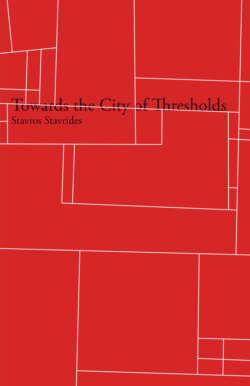Читать книгу Towards the City of Thresholds - Stavros Stavrides - Страница 16
| 01 Exemplary metropolitan rhythms and the city of enclaves Rhythms, social practices, and public space
ОглавлениеThe idea that city-space does not simply contain social life but also expresses social values necessary for social reproduction is well documented in the social sciences. This idea underlies specific forms of social knowledge, for example, that of real estate vendors, municipal technocrats, advertising experts, and politicians.
The following questions can be useful in drawing a very different (or perhaps complementary) perspective: in what ways can the city-space express and support practices and values that are different or even opposite to the dominant ones? If space is formed by forces of reproduction can it also be formed by forces of resistance? What can we learn from spatialities in which social reproduction fails? Can we discuss how spatialities mold alternative cultural values? Are there spatialities in which new hybrid forms of public culture emerge?
To be able to search for such different spatialities, we must be able to locate practices that appear to secrete, express, or use spaces differently. We need to explore city-space by locating its dominant characteristics and its points of rupture. We must be able to establish where those characteristics are disputed, suspended or reversed.
The contemporary crisis of public space offers a useful starting point for our discussion. What is at stake here is not simply the actual or potential use of existing physical configurations but the ways space is created through practices of habitation and shared forms of projection (e.g., collective memories or dreams). Public space can be understood as a coordinated system of spatial distinctions that correspond to social distinctions (cf. Bourdieu 2000, 134). But we cannot effectively understand public space without observing social relations, and their political mediation, as produced and interpreted by social actors.
We need concepts for the ways public space is “performed” in everyday practices, ones that can reveal changes to spatial forms and in spatial practices. Those concepts must be suitable for capturing transformations in the public character of public space that leave no marks. How can we conceptualize temporary constructions, such as for instance the “red zones” defined as no-go areas in the exceptional circumstances of world leaders’ meetings, only to be removed shortly afterwards? These spatial transformations affect public space even when they seem to be absent. How can we discern their possible or actual mutations?
In order to answer these questions, we need to integrate time and public space: to make a new social-space time. This is not simply the empty time of clocks but the socially meaningful time of performed practices. In the ongoing transformation of metropolitan public space, red zones are conceptualized as constructions of this radically new social space-time. Through the performance of red zones, a new model of citizenship and governance is enacted.
